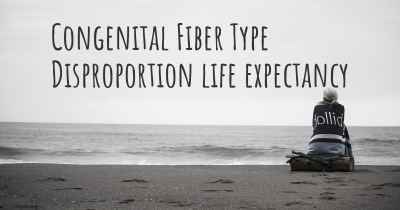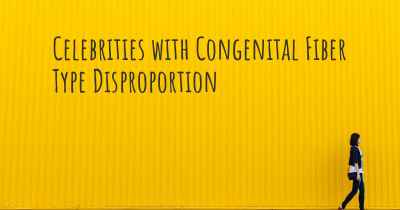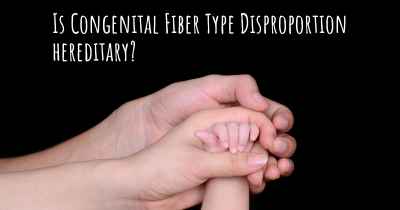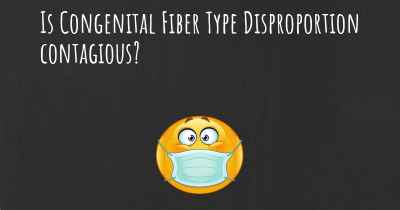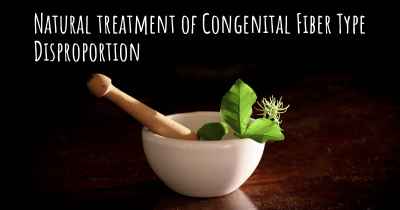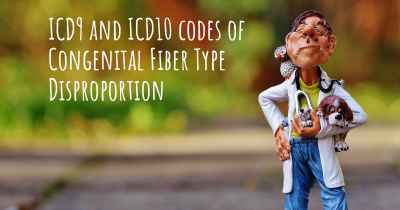Living with Congenital Fiber Type Disproportion. How to live with Congenital Fiber Type Disproportion?
Can you be happy living with Congenital Fiber Type Disproportion? What do you have to do to be happy with Congenital Fiber Type Disproportion? Living with Congenital Fiber Type Disproportion can be difficult, but you have to fight to try to be happy. Have a look at things that other people have done to be happy with Congenital Fiber Type Disproportion
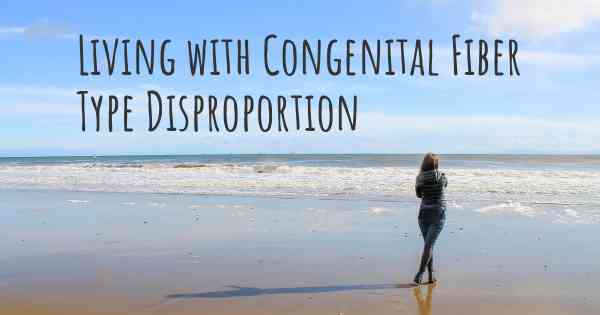
Living with Congenital Fiber Type Disproportion
Congenital Fiber Type Disproportion (CFTD) is a rare genetic condition that affects muscle fibers, resulting in muscle weakness and potential developmental delays. While living with CFTD can present challenges, there are strategies and support systems that can help individuals lead fulfilling lives.
1. Seek Medical Guidance
It is crucial to consult with a healthcare professional who specializes in neuromuscular disorders. They can provide accurate diagnosis, monitor your condition, and offer guidance on managing symptoms. Regular check-ups and open communication with your healthcare team are essential.
2. Physical Therapy and Exercise
Physical therapy plays a vital role in managing CFTD. A trained therapist can design a personalized exercise program to improve muscle strength, flexibility, and overall mobility. Regular exercise can help maintain muscle tone and prevent further weakness.
3. Assistive Devices
Depending on the severity of muscle weakness, assistive devices such as braces, walkers, or wheelchairs may be necessary. These aids can enhance mobility, increase independence, and reduce the risk of falls or injuries. Working with an occupational therapist can help determine the most suitable assistive devices for your specific needs.
4. Adaptive Strategies
Developing adaptive strategies can make daily activities more manageable. This may include modifying your environment to improve accessibility, using specialized tools or equipment, and breaking tasks into smaller, more manageable steps. Occupational therapists can provide valuable guidance in developing these strategies.
5. Emotional Support
Living with a rare condition like CFTD can be emotionally challenging. Seeking support from family, friends, or support groups can provide a sense of belonging and understanding. Connecting with others who share similar experiences can offer valuable emotional support and practical advice.
6. Education and Advocacy
Learning about CFTD and staying informed about the latest research and treatment options is empowering. Become an advocate for yourself or your loved one by educating others about the condition and raising awareness. This can help foster understanding and support within your community.
7. Holistic Approach
Adopting a holistic approach to managing CFTD can be beneficial. This includes maintaining a healthy lifestyle with a balanced diet, adequate sleep, and stress management techniques. Engaging in activities that bring joy and fulfillment can also contribute to overall well-being.
8. Regular Monitoring
Regular monitoring of your condition is crucial to identify any changes or potential complications. Stay in touch with your healthcare team, attend scheduled appointments, and communicate any new symptoms or concerns promptly.
Living with Congenital Fiber Type Disproportion requires a multidisciplinary approach, including medical care, physical therapy, adaptive strategies, emotional support, and self-advocacy. While the condition may present challenges, with the right support and management strategies, individuals with CFTD can lead fulfilling lives.
